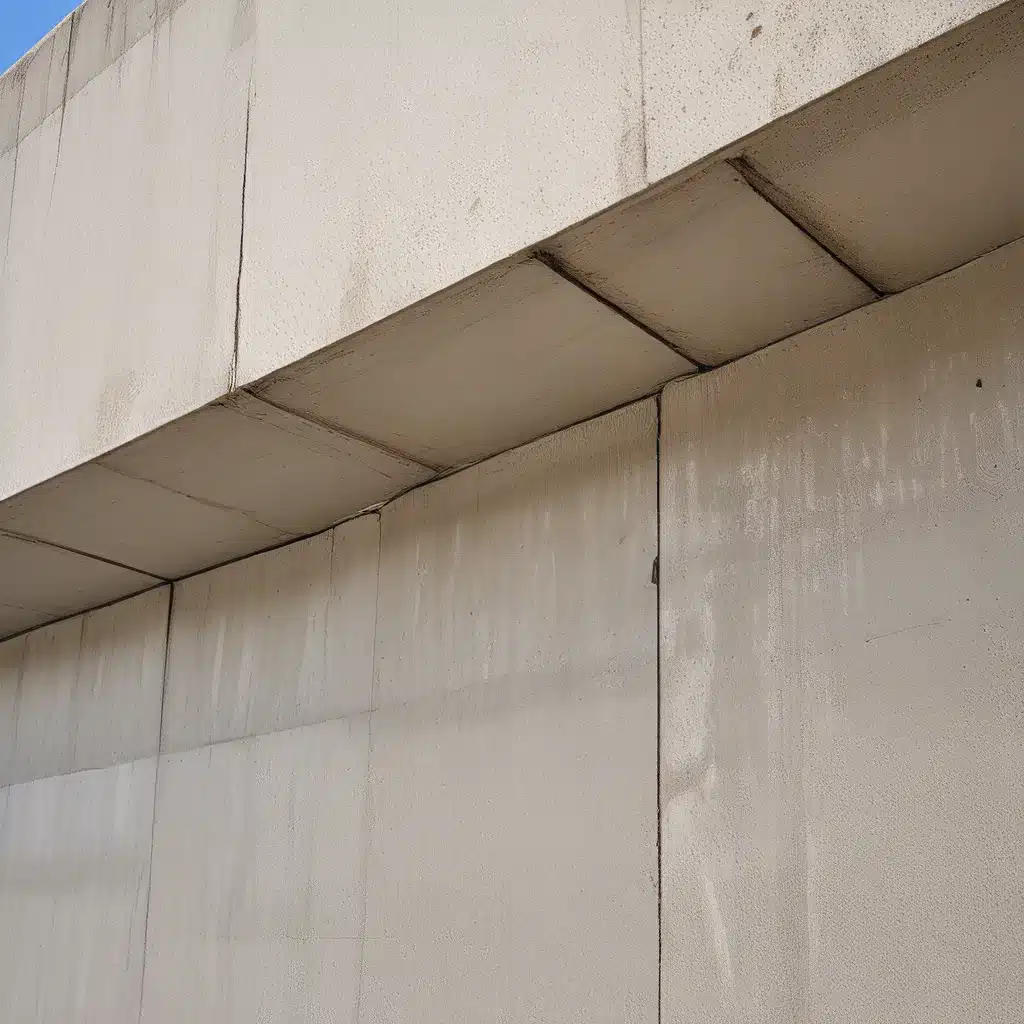
Efflorescence: The Scourge of Concrete Surfaces
Ah, the joys of home improvement. You spend hours agonizing over tile patterns, paint colors, and countertop materials, only to be confronted with a most unwelcome guest – efflorescence. That powdery, ghostly white substance that seems to bloom on your freshly laid concrete like some sort of architectural mushroom. Just when you thought your project was complete, here comes this uninvited nuisance to ruin the clean, polished look you were going for.
Well, my friends, I’m here to tell you that the war on efflorescence can be won. As someone who has dealt with this pesky problem more times than I’d care to admit, I’ve learned a thing or two about preventing and managing this plague on perfect concrete. So, grab a cup of coffee (or something stronger), and let’s dive into the strategies you need to keep your surfaces sparkling and efflorescence-free.
Understanding the Culprit: The Science Behind Efflorescence
Before we can tackle this problem, we need to understand what causes efflorescence in the first place. In simple terms, it’s all about that classic chemistry triangle: salt, water, and porous materials. Nitterhouse Masonry explains it beautifully – the salts inherent in building materials like concrete, mortar, and brick can dissolve in water, then migrate to the surface as that water evaporates, leaving behind those unsightly white deposits.
It’s a bit like a science fair experiment gone wrong, isn’t it? The culprit could be construction water, groundwater, condensation, or even just good old-fashioned rain and snow. And the more porous your materials, the more susceptible they are to this unwanted phenomenon.
Preventing Efflorescence Before it Starts
Ah, but where there’s a problem, there’s a solution. And when it comes to efflorescence, the best approach is to stop it in its tracks before it even has a chance to rear its ugly head. Here are some proactive steps you can take:
1. Material Selection
The first line of defense is choosing the right building materials. According to PROSOCO, certain admixtures and grout compositions can help reduce the porosity of your concrete, slowing the movement of water and salts. And don’t forget to store those materials properly – keeping them off the ground and covered will prevent them from absorbing excess moisture before installation.
2. Proper Installation
Once your materials are on-site, it’s all about the installation. Ensure proper drainage and water runoff around your project, use vapor barriers to isolate your concrete from groundwater, and seal those porous surfaces with a hydrophobic coating after the fact. A little extra attention to detail can go a long way in keeping efflorescence at bay.
3. Ongoing Maintenance
But the battle doesn’t end there. Even after your beautiful concrete is installed, you’ll need to stay vigilant. Regular cleaning and resealing can help prevent efflorescence from taking hold, and addressing any water intrusion issues quickly can nip the problem in the bud. It’s all about being proactive and staying one step ahead of those pesky salts.
Tackling Existing Efflorescence
Alright, so you did everything right, but the dreaded efflorescence has still managed to make an appearance. Don’t worry, you’ve got options! The key is to act quickly before the problem escalates.
1. Brush it Away
Sometimes, a simple stiff-bristle brush is all it takes to sweep those powdery deposits right off the surface. PROSOCO recommends this method for smooth surfaces, and it’s a great first line of defense. Just be sure to wear a mask to avoid breathing in those tiny salt particles.
2. Rinse it Off
For tougher stains, a good old-fashioned water rinse might do the trick. Break out the pressure washer (on the widest angle setting to avoid damage) or a garden sprayer and let the water do its thing. Just keep in mind that this method may bring more salts to the surface as it dries, so you might need to repeat the process.
3. Bring in the Big Guns
When brushing and rinsing just won’t cut it, it might be time to bring in the chemical cleaners. PROSOCO suggests using an acidic cleaner like their Sure Klean Light Duty Concrete Cleaner or Sure Klean Vana Trol to dissolve those stubborn efflorescence deposits. Just be sure to follow the instructions carefully and test in an inconspicuous area first.
Remember, no one solution fits all, so be prepared to experiment a bit to find the right approach for your particular concrete surfaces. And always prioritize safety – those cleaning chemicals can be harsh, so take the proper precautions.
Maintaining a Concrete Oasis
Ah, but the battle doesn’t end there, my friends. Even after you’ve conquered the efflorescence, you’ll need to stay vigilant to keep your concrete surfaces looking their best. Regular cleaning and resealing are the keys to maintaining that pristine, salt-free appearance.
At Concrete Townsville, we know a thing or two about keeping concrete in tip-top shape. Our team of experts can guide you through the process of selecting the right sealants and coatings, as well as provide ongoing maintenance services to ensure your investment stays looking its best for years to come.
So, don’t let efflorescence turn your concrete dream into a nightmare. With the right strategies and a little elbow grease, you can create a clean, stunning oasis that will be the envy of all your neighbors. And who knows, maybe you’ll even inspire them to win their own war on efflorescence. Happy concreting!

